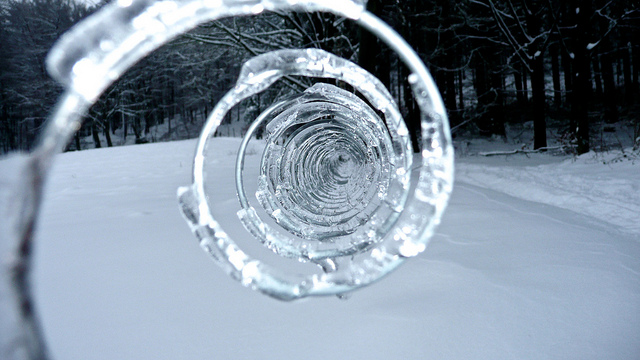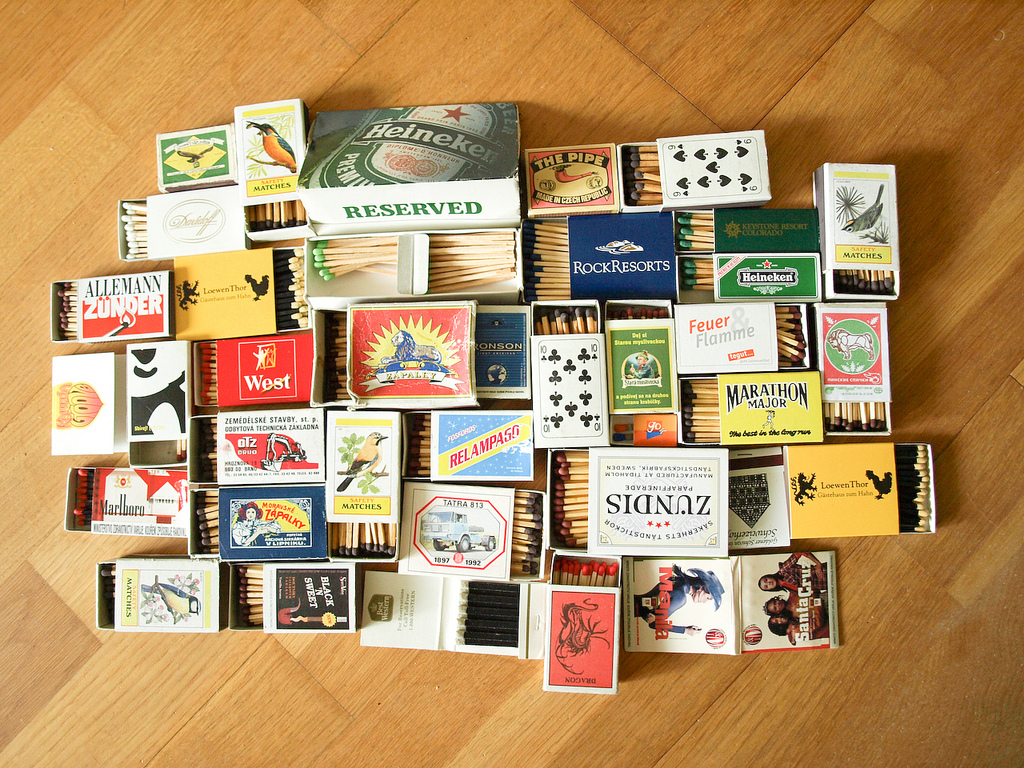
Introduction to JavaScript
Class 3
Loops

Photo credit: Steve Pires cc
While loops
While will repeat the same code over and over until some condition is met.
var bottlesOfBeer = 99;
while (bottlesOfBeer >= 1) {
console.log (bottlesOfBeer + ' bottles of beer on the wall');
bottlesOfBeer = bottlesOfBeer - 9;
}
Infinite Loops
Make sure something changes in the loop, or your loop will go on forever...

Photo credit: Samuel John cc
For loops
For loops are very similar, but you declare a counter in the statement.
//will count 1 to 10
for (var i = 1; i <= 10; i++) {
console.log (i);
}
Loops and logic
You can add other statements or logical operators inside the loops.
//Count from 1 to 50
for (var i = 1; i <= 50; i++) {
console.log (i);
//Says 'Buzz' after multiples of three
if (i % 3 == 0) {
console.log (' Buzz');
}
//Says 'Bang' after multiples of five
if (i % 5 == 0) {
console.log (' Bang');
}
}
Break
To exit a loop, use the break statement.
//Count from 100 to 200
for (var i = 100; i <= 200; i++) {
console.log('Testing ' + i);
//Stop at the first multiple of 7
if (i % 7 == 0) {
console.log('Found it! ' + i);
break;
}
}
Let's Develop It
Write a loop that gives you the 9's times table,
from 9 x 1 = 9 to 9 x 12 = 108.
Finish early? Try using a loop inside a loop to write all the times tables, from 1 to 12.
Arrays

Photo credit: Jesus Solana cc
Arrays
Arrays are ordered lists of values.
var arrayName = [element0, element1, ...];
You can put different types of data into an array.
var rainbowColors = ['Red', 'Orange', 'Yellow', 'Green',
'Blue', 'Indigo', 'Violet'];
var lotteryNumbers = [33, 72, 64, 18, 17, 85];
var myFavoriteThings = ['Broccoli', 1024, 'Sherlock'];
Array Length
The length property tells you how many things are in an array
var rainbowColors = ['Red', 'Orange', 'Yellow', 'Green',
'Blue', 'Indigo', 'Violet'];
console.log(rainbowColors.length);
Using Arrays
You can access items with "bracket notation" by using the position of the object you want. Programmers start counting at zero.
var rainbowColors = ['Red', 'Orange', 'Yellow', 'Green',
'Blue', 'Indigo', 'Violet'];
var firstColor = rainbowColors[0];
var lastColor = rainbowColors[6];
Changing arrays
You can use bracket notation to change an item in an array
var myFavoriteThings = ['Broccoli', 1024, 'Sherlock'];
myFavoriteThings[0] = 'Asparagus';
Expanding arrays
Arrays do not have a fixed length. You can use "push" to add something to an array.
var myFavoriteThings = ['Broccoli', 1024, 'Sherlock'];
myFavoriteThings.push('Dancing');
Let's Develop It
Create an array of your favorite foods. Echo a few values onto your screen.
Arrays + loops = BFF

Iterating through arrays
Use a for loop to easily process each item in an array.
var rainbowColors = ['Red', 'Orange', 'Yellow', 'Green',
'Blue', 'Indigo', 'Violet'];
for (var i = 0; i < rainbowColors.length; i++) {
console.log(rainbowColors[i]);
}
Let's Develop It
Use a loop to make a list of all your favorite foods.
Objects

Photo credit: Jirí Volejník cc
Objects
Objects let us store a collection of properties.
var objectName={
propertyName: propertyValue,
propertyName: propertyValue,
...
};
var aboutMe={
hometown: 'Atlanta, GA',
hair: 'Auburn',
likes: ['knitting', 'code'],
birthday: {month: 10, day: 17}
};
Accessing Objects
You can retrieve values using "dot notation"
var aboutMe={
hometown: 'Atlanta, GA',
hair: 'Auburn'
};
var myHometown=aboutMe.hometown;
Or using "bracket notation" (like arrays)
var myHair=aboutMe['hair'];
Changing Objects
You can use dot or bracket notation to change properties
var aboutMe={
hometown: 'Atlanta, GA',
hair: 'Auburn'
};
aboutMe.hair='blue';
Add new properties
aboutMe.gender='female';
Or delete them
delete aboutMe.gender;
Arrays of Objects
Because arrays can hold any data type, they can also hold objects
var myCats=[
{name: 'Lizzie', age: 18},
{name: 'Daemon', age: 1}
];
for (var i=0; i < myCats.length; i++) {
var myCat=myCats[i];
console.log(myCat.name + ' is ' + myCat.age + ' years old.');
}
Arrays of Objects
Just like other data types, objects can be passed into functions:
var lizzieTheCat={
age: 18,
furColor: 'grey',
likes: ['catnip', 'milk'],
birthday: {month: 7, day: 17, year: 1996}
}
function describeCat(cat) {
console.log('This cat is ' + cat.age + ' years old with '
+ cat.furColor + ' fur.');
}
describeCat(lizzieTheCat);
Let's Develop It
Create an object to hold information on your favorite recipe. It should have properties for recipeTitle (a string), servings (a number), and ingredients (an array of strings).
Try displaying some information about your recipe.
Bonus: Create a loop to list all the ingredients.
Object methods
Objects can also hold functions.
var lizzieTheCat={
age: 18,
furColor: 'grey',
meow: function() {
console.log('meowww');
},
eat: function(food) {
console.log('Yum, I love ' + food);
},
};
Call object methods using dot notation:
lizzieTheCat.meow();
lizzieTheCat.eat('brown mushy stuff');
Let's Develop It
Go back to your recipe object. Add a function called letsEat that says "I'm hungry! Let's eat."
Call your new method.
Built-in methods
JS provides several built-in objects:
You did it!

Resources
- JavaScript Guide, from the Mozilla Developers Network.
- Code Academy, with interactive JavaScript lessons to help you review.